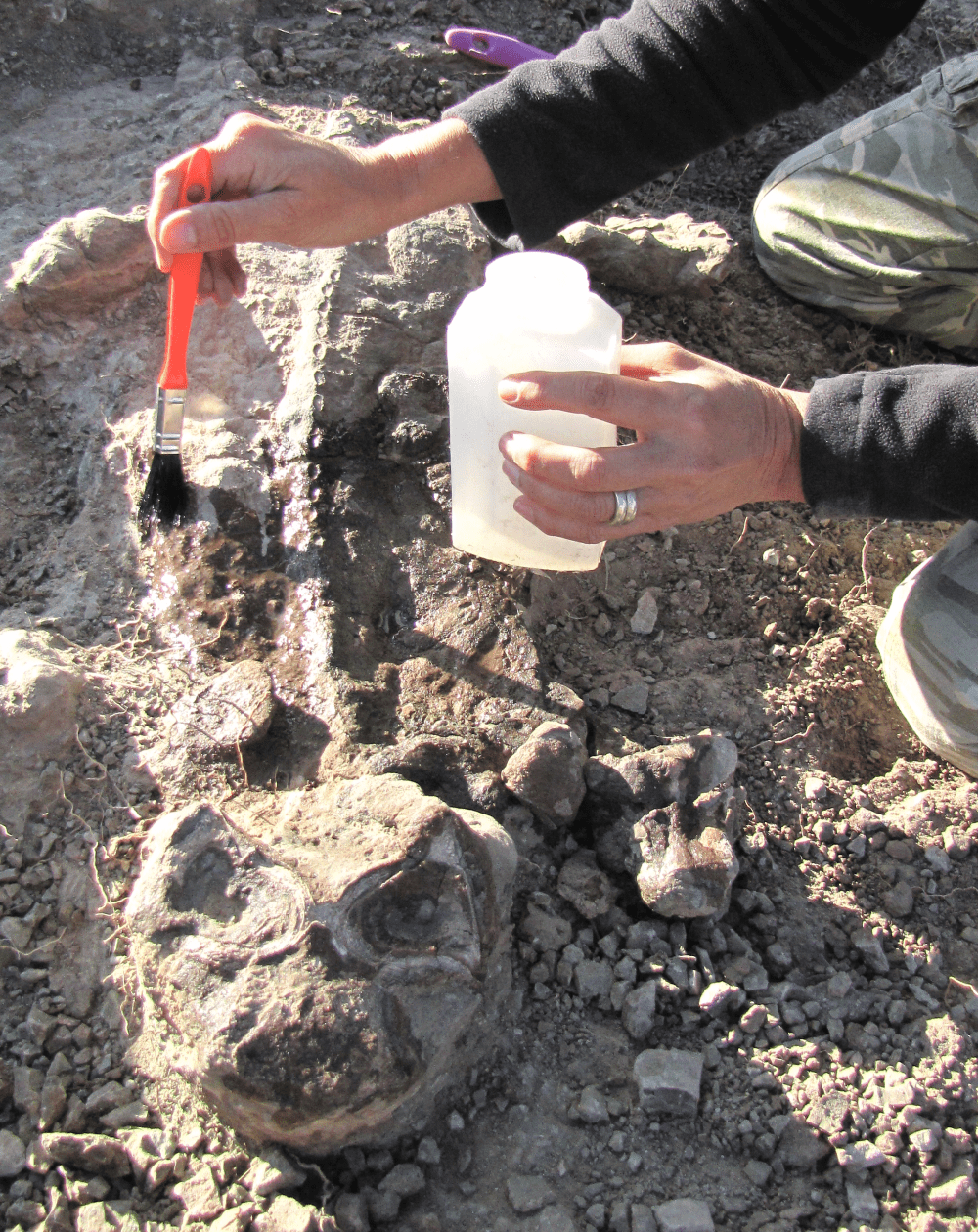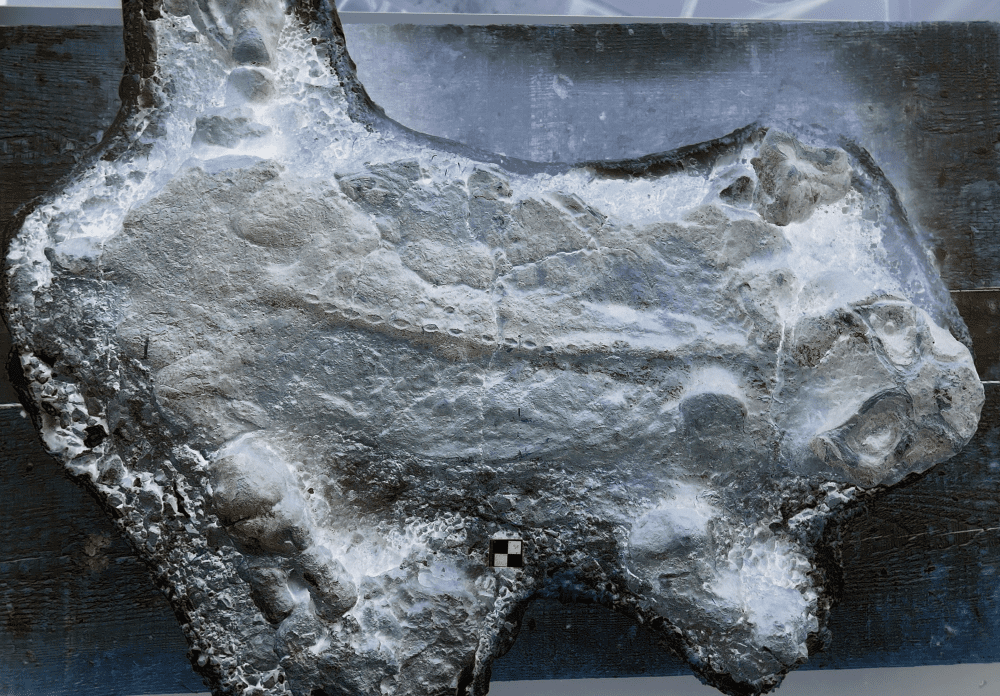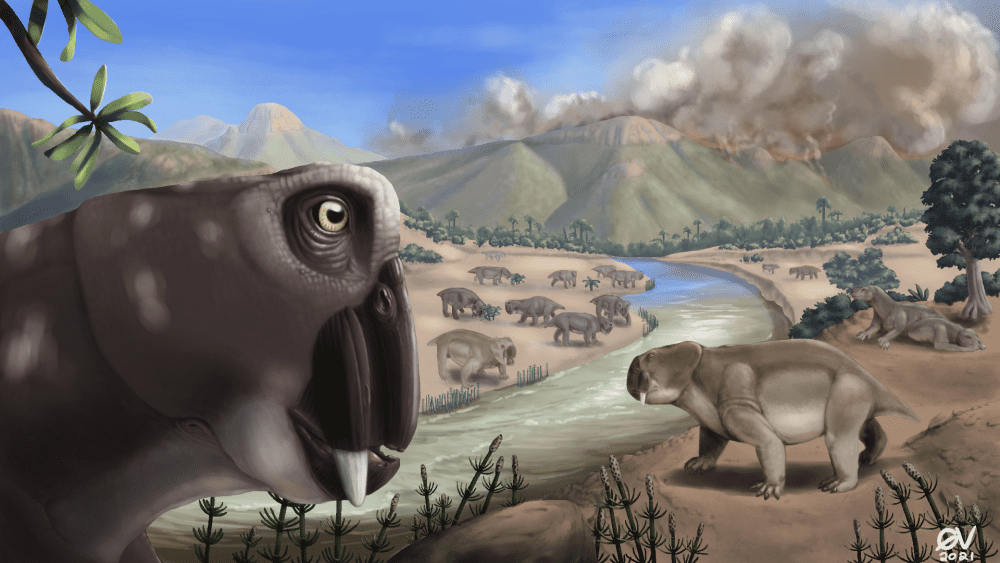Fans of Jurassic World Dominion may recall spotting Lystrosaurus in a few scenes (including a deleted one in which it chomps the head off an Oviraptor). While the silver screen might be the only place we’re going to see such an animal alive and kicking, mummified specimens retrieved from South Africa have now shown their skin in remarkable detail.
The incredibly well preserved Lystrosaurus mummies were discovered in the southern Karoo Basin of South Africa and are thought to hail from the early Triassic, around 251 million years ago, when this region was experiencing the extremes of dry weather.
“The site where these fossils are located represents a uniquely fossil-rich accumulation during the immediate aftermath of the end-Permian mass extinction event,” said Dr Pia Viglietti, a palaeontologist and researcher with the Field Museum of Natural History who has co-authored a paper in Palaeogeography, Palaeoclimatology, Palaeoecology about the Lystrosaurus mummy discoveries, told IFLScience.

Lystrosaurus was an early mammal relative called a synapsid. Image credit: Roger Smith
“[It’s] rare to find this type of preservation in South African fossils from the Karoo Basin. The texture of the skin impression does corroborate hypotheses that Lystrosaurus (an early mammal relative called a synapsid) did not have scaly bodies like reptiles or other very early dinosaur and crocodile relatives living at the same time,” Viglietti said.
“What many have speculated is that synapsids likely had a thick “hide” not unlike hippos or rhinos, and the slightly “pustular” texture of the skin, as described in the paper, is really evocative of this.”

This inverted image of the Lystrosaurus skin shows further detail preserved in the specimens. Image credit: Roger Smith
According to Viglietti, clues hidden within the sediment and the way in which these specimens were committed to the fossil record indicate that when they were alive, the early Triassic was experiencing unpredictable weather. Often this meant spells of immensely dry, arid conditions, which is thought to have contributed to these animals’ demise as they starved to death.
Histological analyses of the Karoo specimens point towards them being juveniles and subadults, demonstrating that life expectancy was suffering as a result of the conditions. While it’s possible they may have adapted to reach sexual maturity at a younger age to mitigate this, it seems that ultimately it wasn’t enough as their presence in the stratigraphic record here drops off suddenly.

An illustration of Lystrosaurus in happier times. Image credit: Gina Viglietti
While Viglietti and colleagues’ paper awaits proofing, she hopes to continue looking into the ways in which ancient animals have coped, or failed to do so, with extreme weather and extinction events.
“I am interested in investigating mass extinction recovery more, because these findings show how long it takes to recover from a mass extinction event. For years many workers in the Karoo assumed the recovery was fairly rapid after this event, but what this site tells us is even Lystrosaurus was really struggling in the new unpredictable world of the early Triassic,” Viglietti told IFLScience.
Source Link: Flattened Mummies Of Mammal Ancestors Found 250 Million Years After They Limped Through Extinction Event